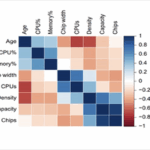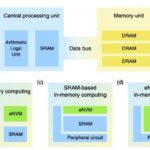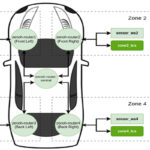Neuromorphic computing, which mimics the human brain’s architecture and function, can be leveraged in edge computing to improve power efficiency, speed, and adaptability. By processing data locally and using event-driven computation, neuromorphic chips can optimize resource usage in edge AI applications, reducing reliance on centralized cloud processing.
Spiking neural networks (SNNs) are the most common way to implement neuromorphic computing systems. Like convolutional neural networks (CNNs), SNNs are a specific type of artificial neural network (ANN).
Data representation and the number of required forward computation passes needed for inference are important differentiators between CNNs and SNNs. In ANNs, the input and output signals of neurons are real values, and only a single feed-forward pass is required for inference.
SNNs, on the other hand, experience inference latency. SNN input and output signals are sparse spikes over a given period, and inference requires multiple feed-forward passes over the period. ANNs process real values while SNNs process spikes (Figure 1).

SNN basics
The membrane potential of each neuron in an SNN is a key element. It changes as a neuron receives an input signal (spike) from other neurons in the SSN. Excitatory inputs cause the membrane potential to become more positive. The potential becomes more negative when inhibitory inputs are received.
The neuron will generate an output spike (“fire”) when the membrane potential reaches a critical threshold value. This mechanism enables SNNs to process information based on the timing and frequency of spikes. The threshold value is determined during the training of the SNN.
Individual spikes represent discrete events or pieces of information, and that information is carried through an SNN based on both the timing and frequency of spikes.
Spikes are propagated between neurons through synaptic connections. The synaptic connections have associated weights that determine how strongly the spike influences the receiving neuron. The weights are determined during training.
SNNs benefits
SNNs can enhance the performance of edge applications like Internet of Things (IoT) devices, smart sensors, robotics, and autonomous vehicles. Since they operate using spike-based communication, SNNs only activate when needed, minimizing power consumption.
Neuromorphic chips like SNNs can implement parallel processing, speeding response times and decision-making. They are well-suited to handle unstructured and streaming data, and some neuromorphic chip architectures integrate both SNNs and memory, supporting in-memory computing and reducing data transfer delays and further reducing power consumption.
Analog vs digital SNNs
SNNs can be implemented using analog or digital techniques. Both use spikes for communication between neurons and are event-driven. Analog SNNs use continuous signals, while digital SNNs use digital signals and processing.
Analog SNNs offer benefits in terms of energy efficiency (they can consume up to 20x less energy than digital SNNs), small size, and real-time processing of analog signals. Analog SNNs can directly process analog signals from sensors without needing analog-to-digital conversions. This can lead to faster response times and simpler systems.
Digital SNNs use CPUs or FPGAs to simulate spiking neuron activity. They can be more scalable than analog approaches and can more easily support larger SNNs. Digital SNNs can be more accurate and reliable than their analog cousins.
Integrated SNNs
Commercial ICs incorporating SNNs have begun to appear. These initial offerings tend to be highly integrated general-purpose devices. In one case, the IC incorporates both analog and digital SNNs, combined with a RISC-V CPU and accelerators for conventional CNNs and the Fast Fourier Transform (FFT) (Figure 2). With integrated memory, it can support in-memory and near-memory processing.

Summary
Neuromorphic devices like SNNs can be used to minimize power consumption and support real-time processing in edge AI applications ranging from sensor fusion to autonomous vehicles and robotics. SNNs are a specialized form of ANN and can be implemented using analog or digital techniques. Commercial ICs with integrated SNNs optimized for edge sensing applications have begun to appear.
References
Brain-inspired microcontroller for sensing at the edge, Innatera
Effective Conversion of a Convolutional Neural Network into a Spiking Neural Network for Image Recognition Tasks, MDPI Applied Sciences
How Neuromorphic Chips Could Redefine Edge AI Devices, embedUR
Polarity-tunable dye-sensitized optoelectronic artificial synapses for physical reservoir computing-based machine vision, Scientific Reports
SpikEmo: Enhancing Emotion Recognition With Spiking Temporal Dynamics in Conversations, arXiv
Spiking Neural Network Chip for Smarter Sensors, IEEE Spectrum
The chips of tomorrow may well take inspiration from the architecture of our brains, IBM
What is Neuromorphic Computing?, Valanor
EEWorld related content
What is the mathematics behind artificial intelligence?
How do AI and ML enhance SASE security?
How is Zephyr used for edge AI and sensors?
Sandia Spiking Tool Improves Artificially Intelligent Devices
What are the different types of AI accelerators?





Leave a Reply